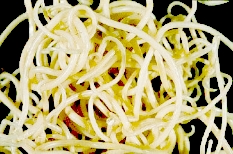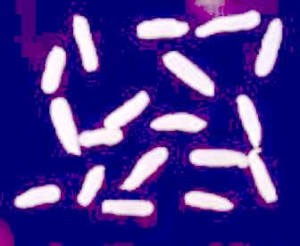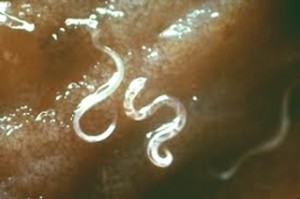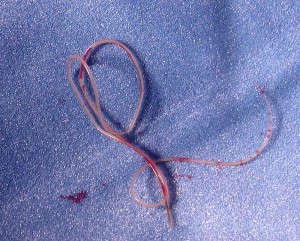Dog worms are parasites that are present internally in dogs. They feed in the insides of dogs and cause many health complications. Dogs worms have to be given prompt treatment, else it can prove to be fatal for your pet.
The worms can transfer from one dog to another through several means such as sniffing the feces of other dogs, through fleas, etc. Humans are equally vulnerable to the spread of dog worms from their pets.
There are five distinct types of dog worms. They are:
- Roundworms
- Hookworms
- Whipworms
- Tapeworms and
- Heartworms
Each one is discussed below at length. In case you have a dog for a pet, it is essential for you to know about such parasites as well as the associated symptoms, so that you can effectively deal with dog worms, if need be, and thus assist your pet in leading a more healthy life.
The different types of dog worms listed above exhibit varied symptoms in dogs. Each of these symptoms has to be observed carefully to diagnose the presence of dog worms and facilitate the initiation of treatment. Prompt and effective treatment is necessary to prevent you from losing your canine friend
Some of the major symptoms of dog worms are listed below:
- Vomiting
- Dull coat
- Low energy levels
- Diarrhea
- Coughing
- Loss of appetite
- Pot-bellied appearance
- Weight loss
- Other general symptoms include a scurfy, red, irritated or pimply skin condition; watery eyes; a dry, hot nose; foul breath and pale lips and gums.
Roundworms
- It is the most common type of worm that affects the dogs of the current generation. It is larger than most worms such as hookworms.
- Dogs infected with roundworms may show symptoms such as rapid weight loss, slow growth, potbellied appearance and dull coat shade.
- Dogs may get infected with dog worms by eating infected soil or feces, consuming the milk of a mother dog with roundworm infection as well as feeding on cockroaches which are a key source of roundworms. Puppies may contact the worm through the placenta of an infected mother dog. Cats and humans are also susceptible to roundworm infection.
- White worms in dog poop that are about 20 centimeters long need to be taken seriously because Toxicara Canis (the medical term for the roundworm that infects pet dogs and cats) can also be spread to humans.
Hookworms
- They are tiny is size and are generally found to be feeding on the blood of dogs within the intestinal walls.
- One of the key signs of hookworm infection in dogs is the presence of anemia. Another major symptom of hookworm infection is malnutrition. Dogs that are infected with this type of dog worms, may also spot blood in their stool.
- Hookworms can be transferred to puppies by their mother via the placenta. Consuming the milk of an infected mother dog can also aid the spread of hookworms.
Tapeworms
- Tapeworms are dog worms which are easiest to detect. As suggested by the name, tapeworms are long and flag and have the appearance of a measuring tape. These dog worms are generally found to be present within the walls of the small intestine.
- One of the key symptoms of tapeworm infection is the presence of actual tapeworms in the stool of your pet. Abdominal pain, vomiting, loss of weight and mild or severe itching in the anal area are other symptoms that indicate the presence of tapeworms.
- The consumption of infected fleas can result in the development of tapeworm infection.
Heartworms
- This type of dog worm infection is one of the most dodgy kinds and really dangerous. There are not many ways that heartworm infection can be treated and treating it can be very difficult. As suggested by the name, heartworms are generally found to be present within the walls of the heart. They cause inflammation and swelling of the arteries which can result in cardiac arrests.
- Some of the symptoms of heartworm infection in dogs include loss of weight, coughing and potbellied appearance of dogs. Prompt and early stage treatment is essential for the survival of your canine friend. Hence a vet should be immediately contact when the initial symptoms appear.
- Heartworm infection transfers from one dog to another through mosquitoes and hence residents of warmer regions that have active and dense population of mosquitoes have to take extra care to prevent heartworm infection of their pets.
Whipworms
- Whipworms are the tiniest forms of dog worms and can be viewed only by using a microscope. There are various kinds of treatment that can be used to treat whipworm infection, though its removal generally tends to be difficult. Whipworms are found to be present in the colon of infected dogs.
- Flatulence, loss of weight, diarrhea, anemia and the passage of bloody stool are some of the major symptoms of whipworm infection in dogs.
These are the different kinds of dog worms that affect dogs. Such dog worms can be treated by various means. When one comes across the symptoms of dog worms in their pets, then they should immediately seek the help of a vet, instead of trying to resolve the problem on your own.
Dog worms pictures
 Roundworm in dogs
Roundworm in dogs
 Tapeworm
Tapeworm
 Hookworms in dogs
Hookworms in dogs
 Heartworm
Heartworm
 Whipworm in dogs
Whipworm in dogs
